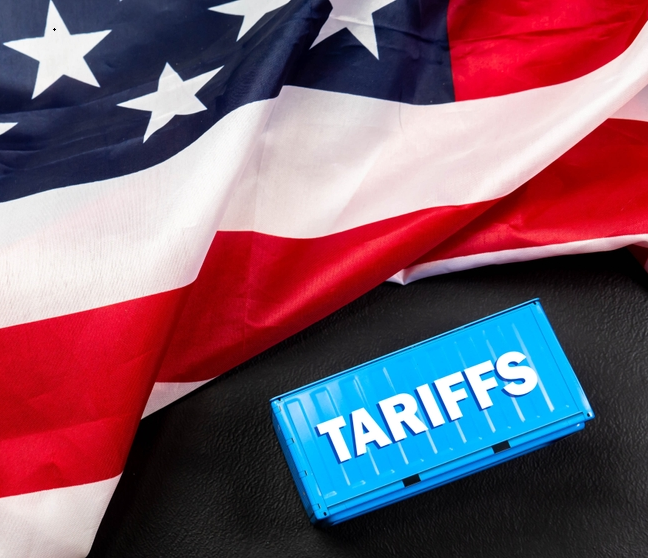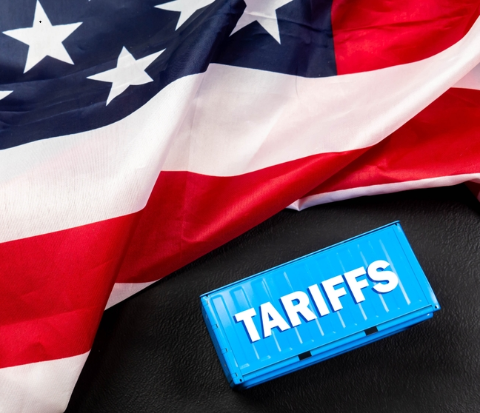Imports don’t subtract from GDP, but they certainly do play a role


The United States’ on-again-off-again tariff announcements since the beginning of the year have injected markets with substantial uncertainty. The major question is to what extent elevated trade barriers and the threat of further escalations will impact financial markets and the global economy going forward. Economists and market participants are therefore on the lookout for hard data that reveal how economies are digesting recent trade developments. When first quarter US GDP data was released in late May, for example, the strongly negative contribution of net exports turned a few heads and was attributed to a surge in US imports ahead of announced tariffs. In early June, US trade data for April were released with a notably sharp drop in US goods imports. Both globally and on an individual country level, external trade dynamics are a significant metric for measuring the health of an economy, and it is therefore unsurprising that amid a festering global trade war, data on US trade developments are generating headlines. But messages about the impact of trade on an economy can often get muddled in financial media, and clarity on these topics is crucial in today’s trade-tense world.
Yo-Yo-ing imports amid yo-yo-ing policies
Trade data for the US illustrates a striking pattern since October 2024 (Figure 1). The trade balance has effectively boomeranged, with the deficit widening sharply through March (by 86% over 5 months) and then narrowing back to 2023 levels in April. The reason for these unprecedented swings is clear; Trump promised sharply higher tariffs, importers rushed to import goods ahead of the tariffs through March, and they then cut back sharply on imports when significantly higher tariffs were (temporarily) imposed on 5 April. Though so-called reciprocal tariffs were halted for 90 days on 9 April, extremely elevated tariffs on China (then 145%) and a 10% base tariff on all other countries remained in place. By mid-May, China and the US agreed to a 90-day reprieve as well, bringing US tariffs on Chinese imports back down to an effective rate of 30%.1 The data so far shows that the impact of these policy changes are far from negligible, and it is therefore important to understand the significance of trade dynamics on the overall economy, and in particular, on GDP growth.

Do imports ‘subtract’ from GDP?
Many casual observers of macroeconomic dynamics know the formula for calculating a country’s Gross Domestic Product (GDP):
Personal Consumption + Government Consumption + Fixed Investment + Change in Inventories + Net Exports = Gross Domestic Product where Net Exports = Exports – Imports.
Based on these two formulas, it seems, at first, logical to note that imports subtract from GDP and therefore to assume that an increase in imports leads to a lower GDP figure. But this would be an incorrect assumption, as the subtraction of imports in the above formula is merely an accounting principle to arrive at only domestically produced value added. Imports need to be subtracted from the other elements of GDP because these other elements (e.g. personal consumption) inherently include imported goods and services. The easiest way to think about this is in the category of personal consumption. If an individual buys a good, say a car, from abroad, that item will be included in personal consumption, but if it wasn’t produced domestically, it shouldn’t be included in a calculation of GDP. So, the imported car needs to be subtracted out elsewhere, netting out the overall impact. Put another way, imports don’t affect GDP one way or another, at least not directly.
But the trade data is still important
If imports don’t ‘subtract’ from GDP, why is there so much attention on trade data? Although some of the handwringing about trade deficits is certainly political, trade dynamics do still have an important impact on the health of an economy. While a higher level of imports does not directly reduce GDP by that amount, import substitution is an important factor to consider. This means, for example, that if a consumer is deciding between a domestically produced car, and a foreign produced car, choosing the domestic one over the foreign one would, all else equal, boost GDP. Of course, in the complex world of international trade, all else is usually not equal.
Today’s web of global supply chains means that often, domestically produced goods are made of many imported parts, while many foreign produced goods are embedded with domestically produced parts. The auto industry is a great example of this. According to calculations by the Peterson Institute for International Economics, US value added within Mexico’s vehicle exports to the US amounts to around 38%, and that figure may be an underestimate[.2
Supply chains aside, international trade is not a zero-sum game. When country A imports from country B, that can boost country B’s economy, raising country B’s demand for foreign goods, including from country A. This leads us to another important aspect of understanding how to interpret trade data and particularly its impact on GDP. At times, high imports in a given quarter can be indicative of high internal demand for that quarter. The opposite is also often true; as figure one indicates, one reliable way to lower the trade deficit is to trigger an economic recession.
Of course, there are times when this relationship between strong demand and strong imports (or vice versa) doesn’t hold. Q1 2025 in the US is a great example. Imports were abnormally strong, growing 14.6% over the quarter, while private consumption was sharply weaker, contributing only 0.8 ppts to annualized GDP growth, compared to 2.7 ppts in Q4 2024. Meanwhile inventories were up sharply suggesting that while the private sector was consuming less, businesses were stocking up on imported goods in anticipation of higher tariff rates (figure 2).

Conclusion
There is still major uncertainty about what will happen to US tariff rates when the current 90-day pause ends on 9 July (excluding China), and how US-China trade negotiations will play out before mid-August. The pauses may induce a further build-up of inventories via imports, but US tariffs are still markedly higher than they were in March. However, if the sharp fall in imports in April continued in May and continues as well in June, the breakdown of GDP components for Q2 might look very different than Q1. If this happens, it is important to remember that the hypothetical fall in imports itself would not boost US GDP growth, despite what headlines might suggest. Rather, it will be more than ever important to look at private consumption, government consumption, investment, and changes in inventories, to see how overall demand within the US is holding up.
